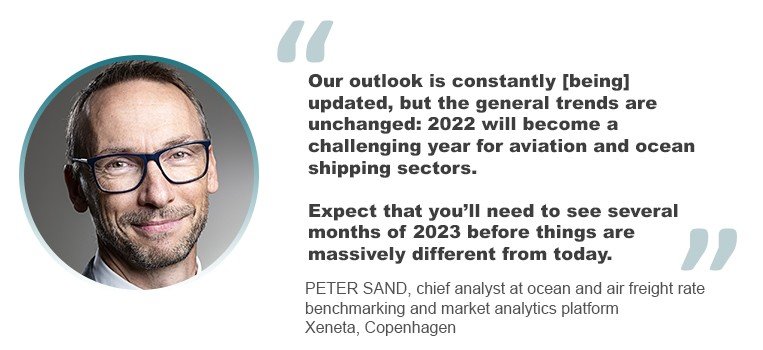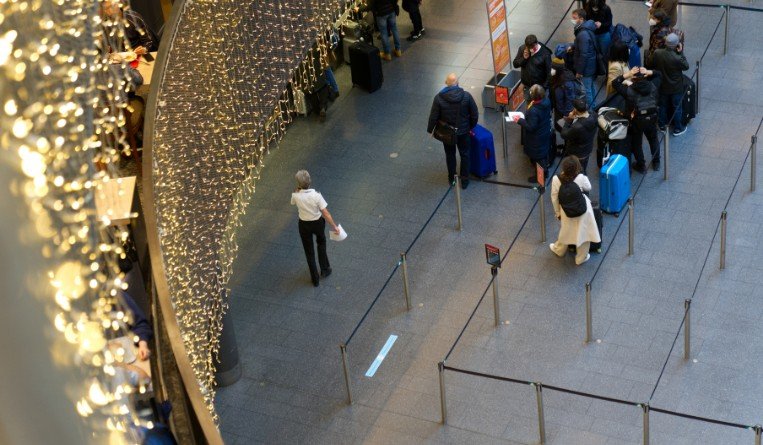The recent emergence of the Omicron coronavirus variant, which has prompted reintroduction of travel restrictions in many countries, is putting further pressure on the already-fragile supply chain, prompting industry representatives to raise caution and expect pandemic recovery to be pushed back to 2023.
The new variant discovered in late November has caused sweeping travel restrictions, which started by impacting Africa but which has quickly spread, with more than 30 countries closing their borders to some nations and others imposing stricter measures to curb the spread of Omicron in a move that’s also widely seen as dragging cargo movement.
The International Air Transport Association (IATA) said earlier this month that the “knee-jerk” reaction of governments to Omicron “threatens” the aviation industry’s recovery. Its chief, Willie Walsh, noted that travel restrictions are “not a long-term solution” to control Covid variants.
Despite the risks tied to the evolving pandemic situation, the International Air Cargo Association (TIACA), which represents the global air cargo community, signalled optimism of continued growth for the sector.
“Supply chains in general, including air, ocean, rail and road-based, look to continue the positive trend as we go into 2022,” Glyn Hughes, TIACA director general, told Asia Cargo News.
“Unfortunately, the latest outbreak of the Omicron variant will re-introduce some additional challenges that we faced earlier in the pandemic,” he added, noting that “specifically, the border restrictions on travelers may result in passenger network resumption slowing down and thus impacting belly capacity recovery.”
Hughes said the “very strong” global economic outlook, rising inflation in some major economies and rising ecommerce are all drivers of the strong air cargo demand.
With bellyhold space still scarce, the TIACA chief noted that “all-cargo” operations will continue to fly the skies in a bid to keep the supply chain moving.
“Cargo demand is running faster than capacity growth so we can expect to see further use of reconfigured passenger aircraft as well as strong demand for full-scale aircraft conversions with many lines being increased to cater for current demand,” Hughes said.
“As capacity challenges continue we can also expect to see forwarders continuing to secure direct charters in response to customer demand.”
Peter Sand, chief analyst at ocean and air freight rate benchmarking and market analytics platform Xeneta in Copenhagen, said current developments related to the coronavirus is proof that the “pandemic is far from over.”

“The arrival of any new Covid variant will wreak havoc, just as we have seen in 2021,” Sand, who is the former chief analyst at shipping industry group BIMCO, said.
“The pandemic is far from over, and measures taken to control it mean an ongoing shortage of air freight capacity, and port omissions galore from carriers, as they will avoid terminals and ports under lockdowns,” he added.
Sand noted that current elevated rates are also expected to persist. For the shipping industry, he said, in terms of ocean freight tendering, the offers received by global shippers, mainly on Far East to North Europe trades, “are [up] three times on what was paid in 2021.”
He added that for the trans-Pacific contract rate, offers are also sharply up. “As for the spot markets, that one is likely to see a lower level in 2022 as compared to the record-breaking 2021.”
“The main trade to keep an eye on is the trans-Pacific. It’s the epicenter of the current crunch, and until we see an easing on that trade, we will not see any other trades ease, either,” Sand added.
Moving into 2022, Sand told Asia Cargo News that the outlook for the industry remains dependent on the ever-changing developments related to the pandemic.
“Our outlook is constantly [being] updated, but the general trends are unchanged: 2022 will become a challenging year for aviation and ocean shipping sectors,” he said. “Obviously more pandemic risk is being added to the scenarios, prompting the unwinding of the currently strained global supply chains to take even longer.”
“Expect that you’ll need to see several months of 2023 before things are massively different from today,” Sand added.
Meanwhile, Josh Brazil, VP for supply chain insights at project44 in Rostock, said the ongoing port congestion at some of the world’s major ports is mainly to blame for the current supply chain disruptions.
“While Covid-19 has been causing disruptions, there is no specific impact based on the variants yet. There has been no lockdown in ports globally since the initial total lockdowns we saw in late 2020 and early 2021. If there are any specific lockdowns, they seem restricted to the specific ports and not generalized,” Brazil told Asia Cargo News.
“The issues affecting supply chain flows now and going into 2022 is still pretty much due to the port congestion caused by bunching of vessels and the delays in removing full containers from the ports, which is preventing vessels from berthing in time,” he added, noting that the industry has also yet to see disruptions from quarantine measures in place.
“We have not seen or heard any major delays or disruptions specifically due to Covid-19 crew/quarantine restrictions,” Brazil added.
“In terms of rates, the prediction is that the current trend will still continue,” he said, noting that while there was a slight drop in rates in November, they are going up again, and are expected to remain high until the Chinese New Year, before dropping back to “reasonable levels.”
“But no one is expecting rates to go down to pre-pandemic levels at least until 2023 or 2024, when new ships and containers will come into circulation,” Brazil said.
Charlee C. Delavin



